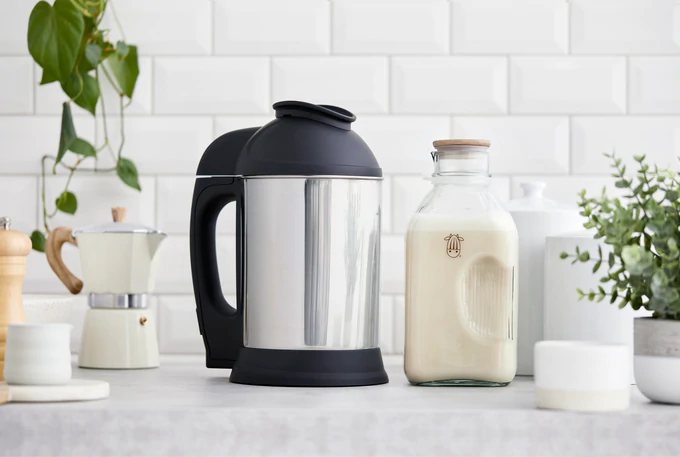
Easy Cleaning Tips for Your Nut Milk Maker | 3 Best Methods
In designing the Almond Cow, one of the most important aspects we had in mind was that our machine make the entire plant-based milk-making process more convenient, easy, and quick for our customers. A huge part of that is the clean-up after making homemade milk! In the past, making homemade milk with a cheesecloth was a messy and time-consuming task. Not with the Almond Cow though! With our machine, delicious, healthy, homemade milk can be made in just 60 seconds, and the clean-up afterward takes just a couple of minutes longer. Whether you use your Almond Cow daily, or weekly, we have several cleaning options for you, so that when you go to make milk the next time, your machine is clean and ready to use!
Option #1: A Quick Rinse
Simply rinse your Almond Cow, blade, base, and collector cup with water. This method is great for the everyday user. If you are using this method, we recommend rinsing the machine right after making milk. Avoid letting it sit for a while before rinsing, as this makes clean up more difficult.
Option #2: Cleaning With Soap & Water
Clean your Almond Cow with soap and water. This method is great if you have any oily residue from making fatty milks, like coconut milk, or if you added any oil to a recipe, like oat milk. We recommend adding hot water to the maximum line of the base with ½ tsp of soap and then attaching the empty filter basket to the top of the Almond Cow. Next, run the machine for a normal full cycle (pressing the cow start button just one time). If you feel it’s necessary, feel free to run the machine twice.
Side note: Please use caution when cleaning with hot water, as the stainless steel parts of the Almond Cow can become very hot when in contact with hot water.
Option #3: A Deep Clean Using Vinegar
When wanting to do a deeper clean of your Almond Cow, we recommend cleaning it with water and vinegar, as this is a great method for disinfecting and descaling limescale that builds up over time on metal surfaces exposed to water. Simply add 6 Tbsp white distilled vinegar to the base of the Almond Cow, then fill the base to the maximum line with hot water, and attach the empty filter basket to the top. Next, run the machine for two full cycles. Once it’s finished, rinse it out with water, wipe it, and it’s ready to go for your next use.
Please note:
We recommend using all 3 of these methods at different times, depending on the current state of your Almond Cow, as well as how frequently you use it.
The black parts of the Almond Cow top can not get wet. The electrical ports are located on these parts and cannot get water in them in order for your machine to continue working properly. We recommend holding the top sideways underneath your faucet when rinsing, allowing the water to reach all the metal parts of the top, and then simply using a lightly damp cloth to wipe off the remainder of the Almond Cow top.
